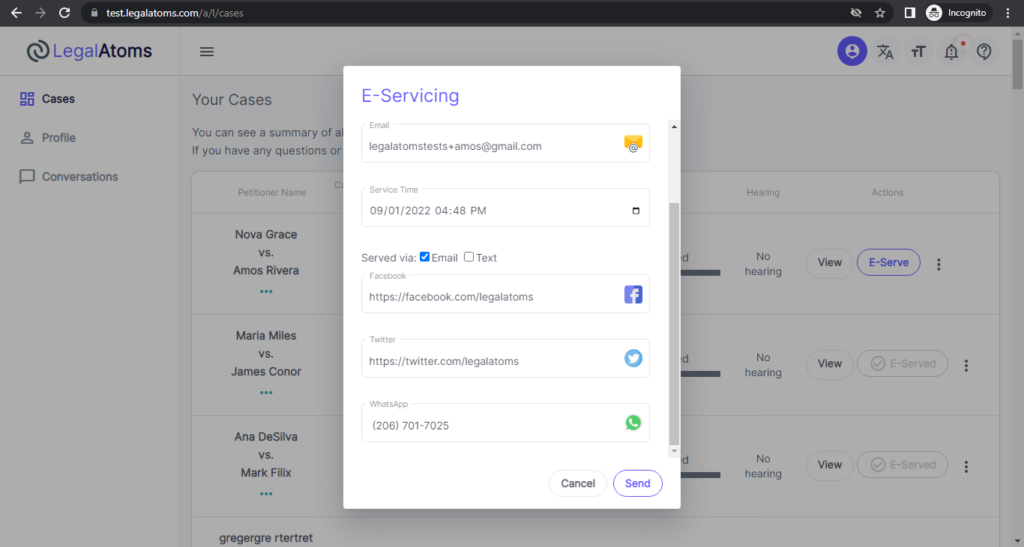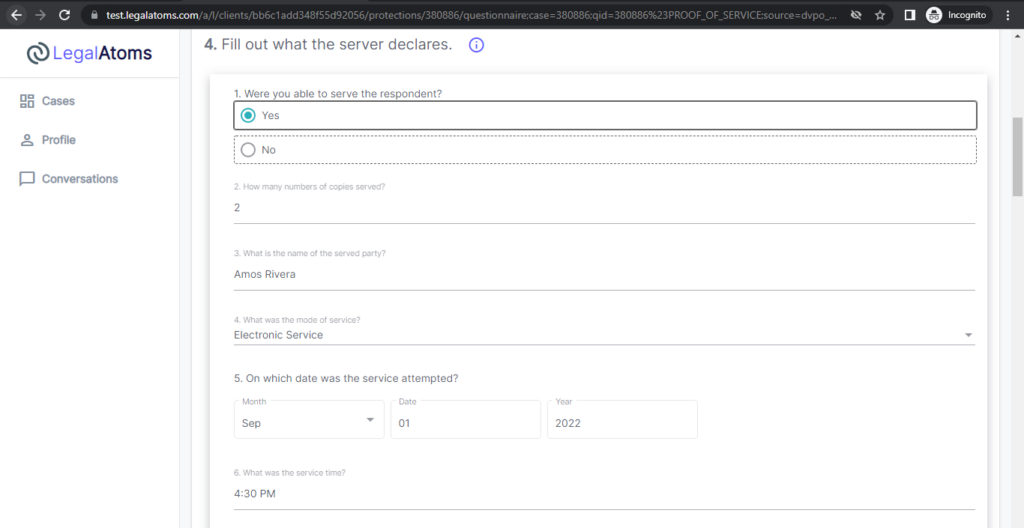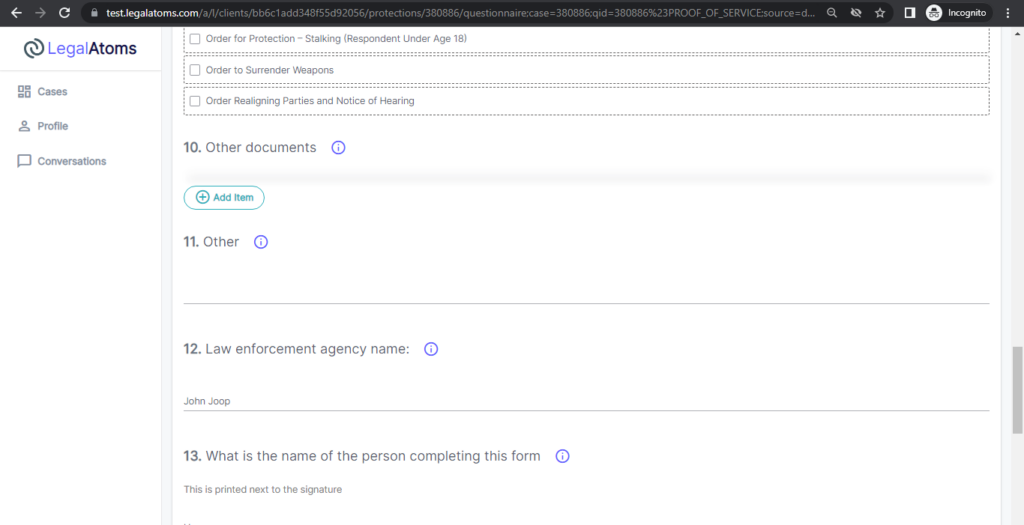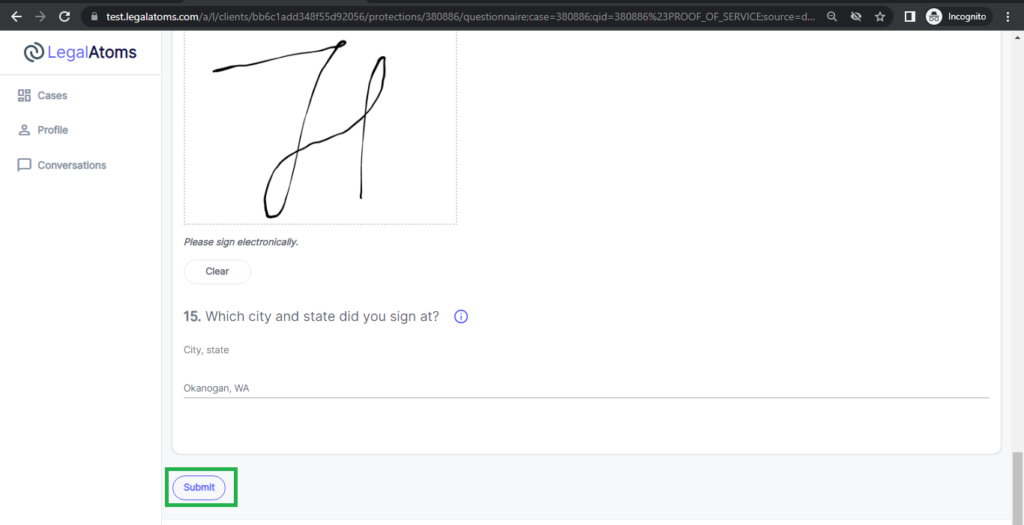How Law Enforcement Can Electronically Serve
Recently updated on June 7th, 2025 at 09:08 am
This page describes how Law Enforcement can receive documents via LegalAtoms and then service the client offline, and then complete the Proof of Service digitally using LegalAtoms
Step 1: Login to LegalAtoms
Navigate to https://app.legalatoms.com/
You will see the login screen where you can enter your credentials and hit login.

Step 2: E-Serve a specific Case
On the main page, titled “Your Cases”, locate the specific case you want to serve and click the E-Serve button
Step 3: E-Servicing Popup
Once you click on the E-Serve button, a popup is shown.
- Enter the service time
- Select the respondent served via, options being
- Text
- Enter Facebook profile link
- Enter Twitter profile link
- Enter Whatsapp number
- Click on the Send button
Once you’re served, the message is shown at the end of the bottom screen.

Step 4: Simply Complete the Proof of Service
After completing the E-Service, officers simply need to complete the proof of service.
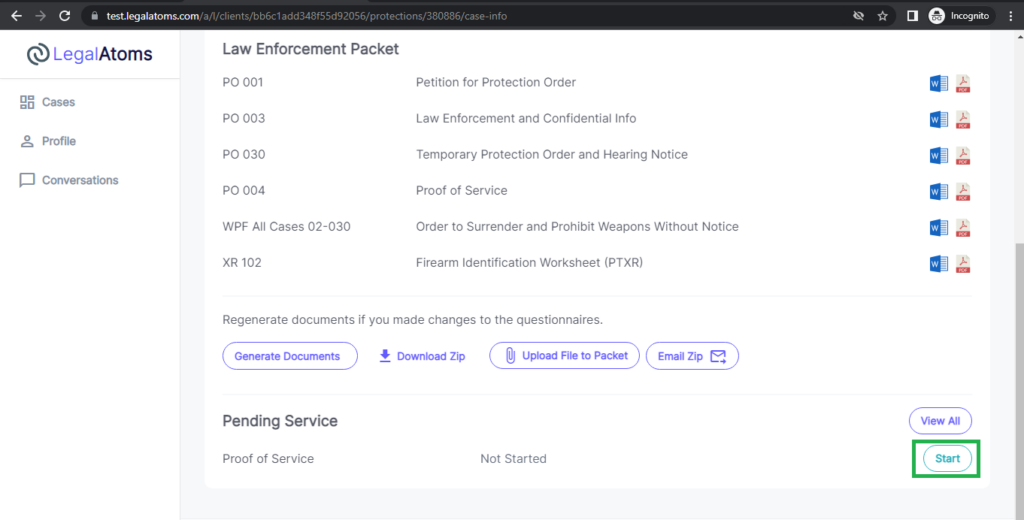
Click on the Start button, you will be led to a new screen which will be a questionnaire having the same pieces of information that are on the paper version of a Proof of Service form.
Step 5: Complete the questionnaires
Complete all the questionnaires and click on submit button.
At this point, the court is notified and will have access to the Proof of Service.
Related Posts
Can I Appeal A Small Claims Judgment Illinois
Overview In Illinois, every party in a small claims case—plaintiff or defendant—has the right to appeal a judgment entered by a circuit-court judge. Although the small claims division is designed for speed and informality, its decisions are legally binding. If you believe the judge misapplied the law, ignored important evidence, or reached a conclusion unsupported…
Illinois Small Claims court Process Self Represented
Overview The Illinois Small Claims Court is designed for speed, simplicity, and self-representation. It handles civil disputes involving $10,000 or less, excluding interest and court costs. The process is structured to be accessible to citizens without lawyers—what Illinois courts call “pro se” litigants. By providing standardized forms, plain-language instructions, and flexible scheduling, the small-claims system…
Illinois mall Claims Court Forms Fees
Overview The Illinois Small Claims Court provides an efficient and affordable way for individuals and small businesses to resolve monetary disputes of $10,000 or less. Designed for self-represented litigants (pro se), the system simplifies traditional civil procedures through standardized forms, limited motion practice, and straightforward evidence rules. Every county follows uniform requirements based on Illinois…
What Qualifies For Small Claims Court Illinois
Overview The Illinois Small Claims Court exists to resolve civil disputes involving money claims of $10,000 or less. It provides a simple, fast, and affordable way for people to pursue justice without needing an attorney. The rules are governed by Illinois Supreme Court Rules 281–289, which simplify filing requirements, remove most formal discovery, and encourage…




